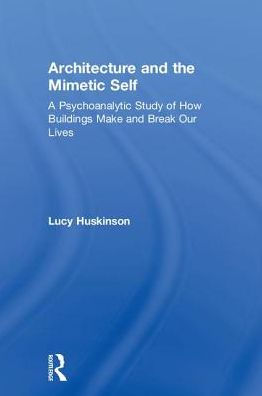Criteria for effective architectural design have for a long time been grounded in utilitarian and aesthetic principles of function, efficiency, cost, and visual impact. Although these are important considerations, they often fail to meet the fundamental needs of those who inhabit and use buildings. Misconceptions are rife, not least because our responses to architecture are often difficult to measure, and are in large part unconscious. By bridging psychoanalytic thought and architectural theory, Architecture and the Mimetic Self frees the former from its preoccupations with interpersonal human relations to address the vital relationships that we establish with our nonhuman environments.
In addition to providing a guide to the unconscious behaviours that are most relevant for evaluating architectural design, this book explains how our relationships with the built environment inform a more expansive and useful psychoanalytic theory of human relationship and identity. It will appeal to psychoanalysts and analytical psychologists, architects, and all who are interested in the overlaps of psychology, architecture, and the built environment.
Criteria for effective architectural design have for a long time been grounded in utilitarian and aesthetic principles of function, efficiency, cost, and visual impact. Although these are important considerations, they often fail to meet the fundamental needs of those who inhabit and use buildings. Misconceptions are rife, not least because our responses to architecture are often difficult to measure, and are in large part unconscious. By bridging psychoanalytic thought and architectural theory, Architecture and the Mimetic Self frees the former from its preoccupations with interpersonal human relations to address the vital relationships that we establish with our nonhuman environments.
In addition to providing a guide to the unconscious behaviours that are most relevant for evaluating architectural design, this book explains how our relationships with the built environment inform a more expansive and useful psychoanalytic theory of human relationship and identity. It will appeal to psychoanalysts and analytical psychologists, architects, and all who are interested in the overlaps of psychology, architecture, and the built environment.

Architecture and the Mimetic Self: A Psychoanalytic Study of How Buildings Make and Break Our Lives
266
Architecture and the Mimetic Self: A Psychoanalytic Study of How Buildings Make and Break Our Lives
266Hardcover

Product Details
| ISBN-13: | 9780415693035 |
|---|---|
| Publisher: | Taylor & Francis |
| Publication date: | 02/14/2018 |
| Pages: | 266 |
| Product dimensions: | 6.12(w) x 9.19(h) x (d) |
